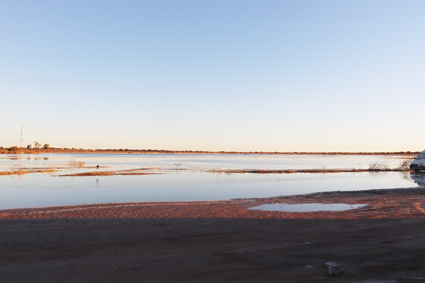Thaga The feathered guides of Tsootsha
15 Dec 2021
From time immemorial, and while modern technology tarried, people used various methods to find water.
These included observing growth patterns of some plant species, growth of anthills and water witching.
Some of the methods, while generally contemned by modern science, were so effective that entire villages soon sprung where the water would have been located.
But then, there were those people who would simply follow the trail of animals such as an anteater, a warthog, or even a reptile such as a monitor lizard or python to find water.
For the people of Tshootsha, it was a flock of tiny golden weavers, locally known as thaga, which led them to water.
Under the guide of a Mokgothu man, they trusted their instincts, and followed the birds until they settled in a place where the now popular Trans Kgalagadi Highway would later pass, halfway Ghanzi and
Mamuno border. And there, shimmering beneath the harsh swizzling and ‘azwitting’ calls of the birds, lay the pan.
“Our people were led by Thaga because the birds were good at detecting water sources,” explains Kgosi Bernard Kaome.
Those early inhabitants who followed the birds over many kilometres from Kgalagadi north many years ago, would not have imagined that the pan would still be the primary source of life today.
As their population grew, with more of their people from Kgalagadi north joining them and families growing, they divided the place into six wards, the biggest one named Thaga after the feathered guides.
The rest of the wards carried the names of the bigger ones from which they broke away, far away in the north.
“Apart from Thaga, we currently have Moselebe, Morakile, Mopebana, Ngologa and Ukhwi. All these originate from Kgalagadi north where our people come from, “ says Kgosi Kaome.
The settlers enjoyed life in their new home for years; relying on water from the pan for both human and animal.
However, over time owing to population growth of humans and livestock, the water reduced drastically. Some animals died in the pan.
One day, while he had gone to the pan with others, the Mokgothu guide, wringing his nose exclaimed, “Tsootsha!” meaning the water was bad.
That exclamation became the name of the village, known also today as Kalkfontein.
Even though many other pans were discovered over the years, the one situated at Thaga ward has maintained its status as the main source of water due to its size and historic significance.
As the population increased and farming grew in the area, coupled with climatic changes, the pan dried up.
But its dry spells would end whenever it rained heavily. During the dry years residents would dig shallow wells in the pan.
Sometimes the dry spells were very long. One of the periods was so long that Botswana Defence Force (BDF) even used it as a football pitch; with the village young men and boys following suit.
However, recent rains have restored the place to its original splendour, eliciting fond memories among the old, who had yearned to one day see it full again.
This time, the heavens provided water in abundance filling it up to its very banks, where the enterprising have set up makeshift business structures to provide their useful service to tourists, and make a profit.
“I mainly provide braai meat, coffee and other fast food French chips.
I wanted to be different from the other tuck-shops because I did market research and realised that people wanted something different from what was in the market,” says Mr Keamogetse Tlamme.
The 36-year old Tsootsha native left his job as a supervisor in a spares shop in Gaborone earlier this year to set up his tuck-shop in the area.
His dream is to have the best eatery in the area, and judging by the number of customers going in and out of his eatery, things are indeed lookingset for him.
His normal business day starts at from 730am and ends at 630 pm.
Within stone’s throw of his business is a mini-mall with a fuel point for delivery trucks en route to South Africa and Namibia, and a spares shop, no doubt strategically positioned for the truckers and other motorists.
These are his major customers, and for whom he has built a sitting so they may have their meals while admiring the ducks and other water birds in the pan.
His will not be the only business here for long, as already a tourism company, Eharui Resort and Transfers wants to bring water spots to the area.
The company recently obtained a temporary license for boat cruising, during which they determined the depth of the pan with a view to introducing suitable water sports.
“As a tourism company we have realised that there are no water spots around the area and people have to travel to places like Maun and Namibia for those. We decided to apply for a temporary licence to experiment.
Our findings and assessment will map a way forward on activities to venture into,” explained the manager, Mr Stephen Hangara.
These experiments are music to the residents’ ears, as Kgosi Kaoma reveals.
“For years we have made attempts to preserve the pan as a tourism destination, whereby we would generate income for the community”.
However, lack of support from relevant authorities ensured the pan remained a mere dam, guarded only by four forlorn submerged football posts, and in which residents watered their animals.
Kgosi Kaome’s advise to people: Be careful around the water and do not undermine its seemingly shallow depth. ENDS
Source : BOPA
Author : Kehumile Moekejo
Location : TSOOTSHA
Event : Tsootsha village
Date : 15 Dec 2021







